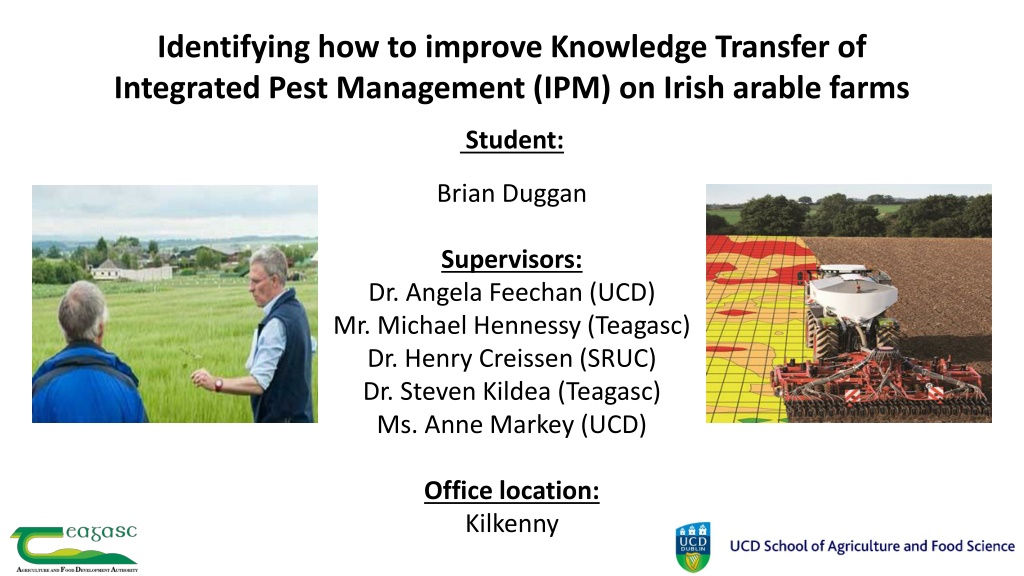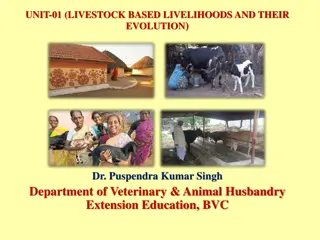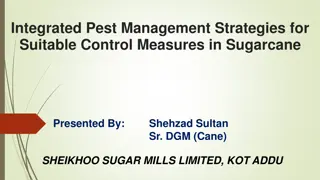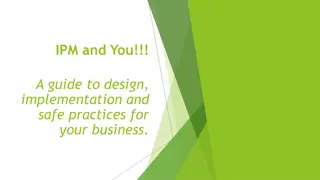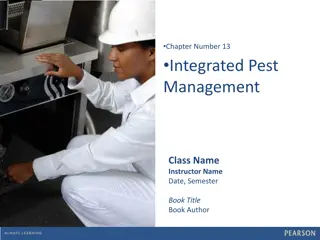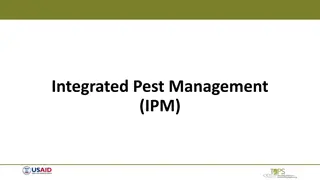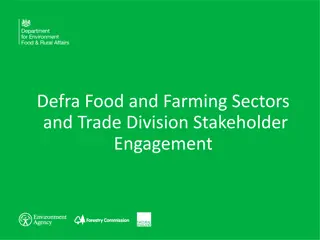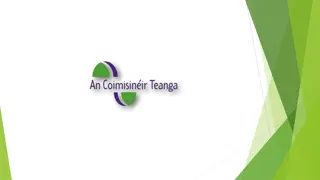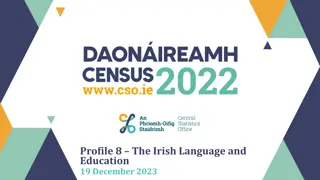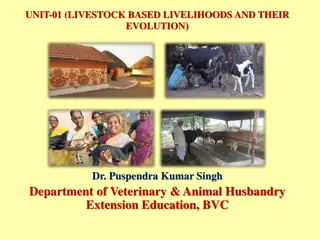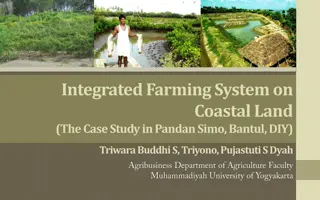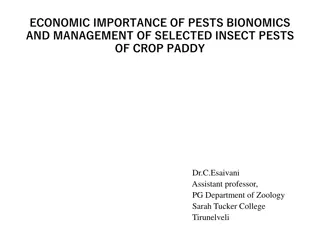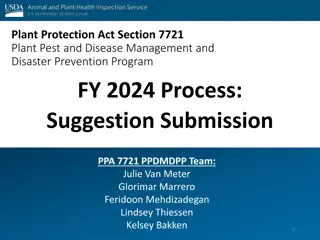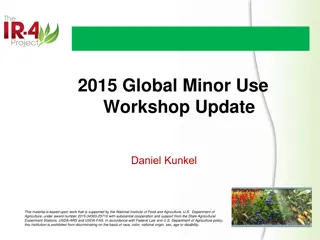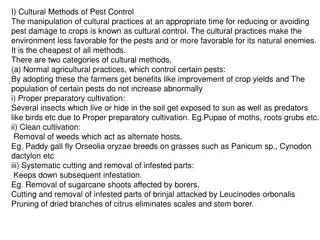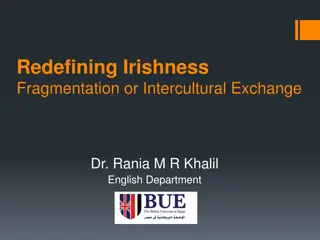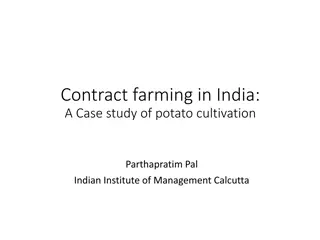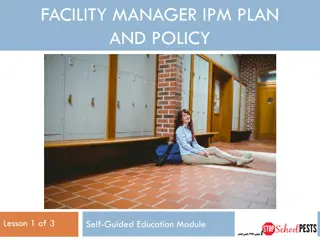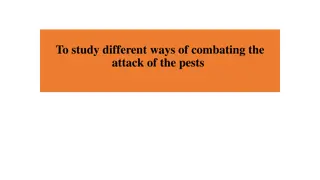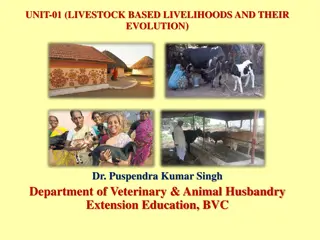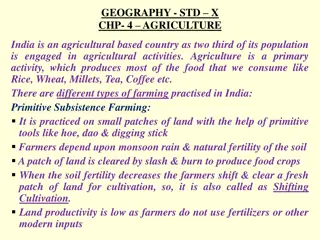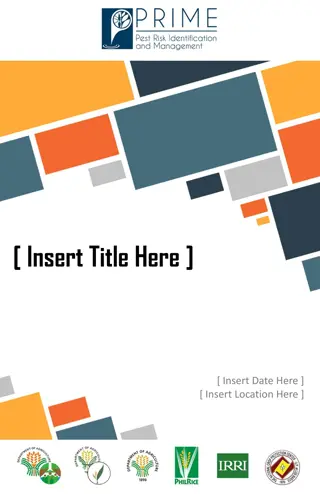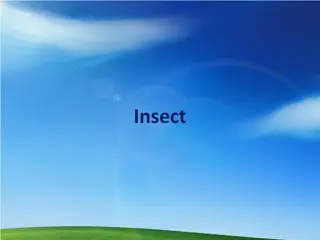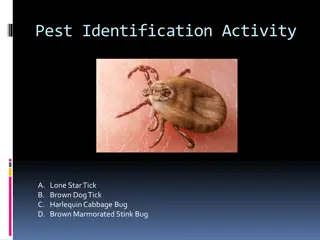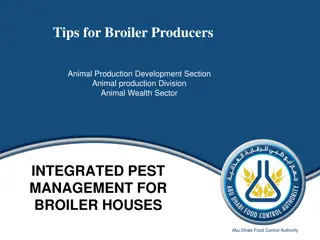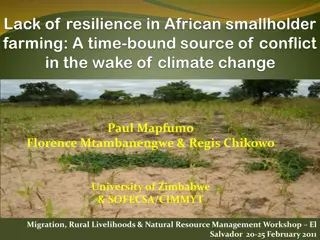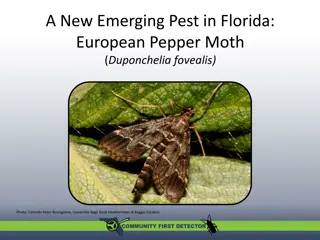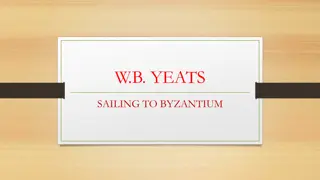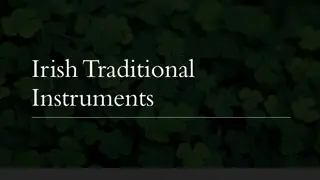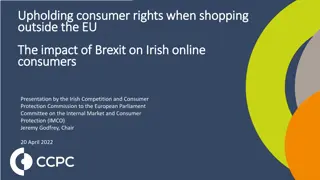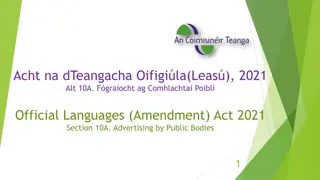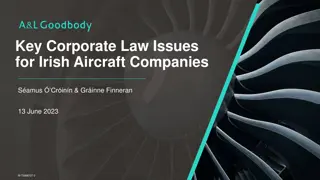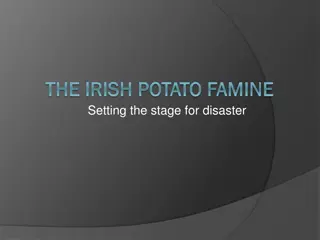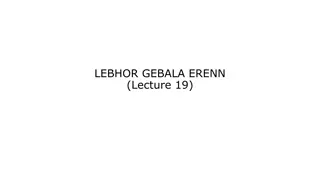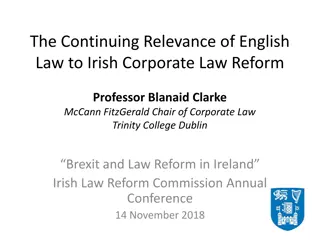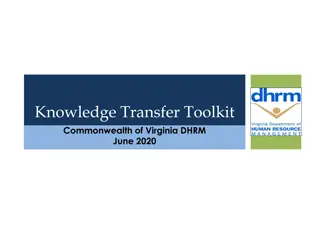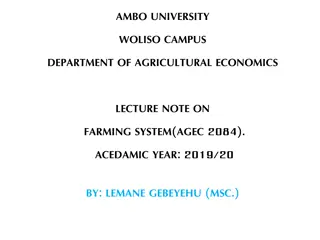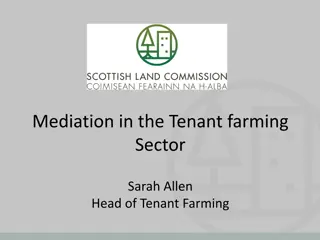Enhancing Knowledge Transfer for Integrated Pest Management in Irish Arable Farming
Pests pose a persistent challenge in crop production, prompting the need for Integrated Pest Management (IPM). This study aims to improve knowledge transfer of IPM on Irish arable farms by analyzing farmer perceptions and practices. Preliminary findings highlight disparities in IPM best practices among surveyed farmers, with factors like information sources and participation in discussion groups influencing outcomes.
Download Presentation

Please find below an Image/Link to download the presentation.
The content on the website is provided AS IS for your information and personal use only. It may not be sold, licensed, or shared on other websites without obtaining consent from the author. Download presentation by click this link. If you encounter any issues during the download, it is possible that the publisher has removed the file from their server.
E N D
Presentation Transcript
Identifying how to improve Knowledge Transfer of Integrated Pest Management (IPM) on Irish arable farms Student: Brian Duggan Supervisors: Dr. Angela Feechan (UCD) Mr. Michael Hennessy (Teagasc) Dr. Henry Creissen (SRUC) Dr. Steven Kildea (Teagasc) Ms. Anne Markey (UCD) Office location: Kilkenny
Introduction Pests (weeds, diseases, insects & molluscs) have always been a challenge in crop production to both yield and quality Decreasing availability of pesticides from regulation and/or resistance development IPM is the use of an optimal mix of pest control techniques and tools including cultural, physical and biological in the first instance chemical control a last resort Increased need for IPM at farm level
Study Objectives & Methods Study Objectives & Methods Methodologies Objectives Categorisation of farmers Semi-structured interviews* Background Farmer Survey Understand grower perceptions and practice Pest management decision making, advice and information Barriers to uptake of IPM KT gaps and improvement of advisory service *In progress Piloting & completion by end of January 2018
Farmer Survey Survey questions relating to perception and practice. Questions focusing on practice were selected towards a score to quantify IPM best practice. Profile of survey respondents Arable area (n=227): Part of a wider study EPIC. Average 124 ha vs 58 ha (National average) Min: 8 ha, Max: 720 ha Stakeholder workshop held in Ireland in June 2017. Participants asked to rank question answers in terms of importance to IPM best practice. Age Profile (n=227) 33% <40 years vs 67% >40 years Score operates on a scale of 0-100%.
* Preliminary IPM Best Practice Score Summary Arable land (n=227) Specialist arable (n=187) Low Score <40% Medium Score 40-60% High Score >60% 15 Percentage of respondents (%) 10 5 0 20 25 30 35 40 45 50 55 60 65 70 75 80 85 (Scale 0-100%)
*Preliminary Findings *Preliminary Findings Farmer Practices High Group (n=34) Medium group (n=98), Low group (n=55) Farmer Practices Utilising more on farm information sources crop walking data (88%H vs 63%M vs 33%L) More likely to use a pest management plan (97%H vs 87%M vs 62%L) Lower proportion of land in continuous cereals (75-100% continuous only 6%H vs 20%M vs 40%L) More likely to be a member of a discussion group (82%H vs 76%M vs 67%L) Overall Self-Reported Specialist Tillage (n=187): Disease management Resistant varieties 72%, Seed treatments 55% Weed management Hand rouging 48%, Stale seedbed 44%, Headland management 36%, High weed level fields harvested last 8% Insect & mollusc management Seed treatments 67%, Avoid BS insecticides 25%, Thresholds 18%, Preparations for mollusc control 14%, Encourage beneficial insects through planting habitat 19%
*Preliminary Key Findings *Preliminary Key Findings IPM Best Practice Score Attitude Age Education Self reported familiarity Arable farm size
* Preliminary Key Findings * Preliminary Key Findings 98% of respondents are using a crop protection advisor to some extent Relationship can vary from total reliance to more involvement from farmer Survey highlighted a mix of relationships Overall Self-Reported Specialist Arable (n=187) 3% - Tell advisor what they want and advisor responds to meet their wishes 15% - Listen but adjust if needed in the field 20% - Decide on pest management strategy together with advisor 23% - Rely on them and act on their suggestions 27% - Listen to their advice but always consult other sources of information
* Preliminary Findings * Preliminary Findings - - Pilot Interviews Both farmers use an agronomist as a service from where they buy their spray Pilot Interviews o PF1: I would be taking a recommendation from the agronomist o PF2: There is a good guy there that comes and tells me what I should do and what I shouldn t do and all of that Farmers taking recommendation from agronomist but might verify it with others i.e. Teagasc, other farmers o PF1: I buy my chemicals through X, and I know the agronomist quiet well and find them very helpful. I also bounce stuff off Teagasc advisor which is also helpful o PF2: I would listen to the agronomist but may run it by Teagasc as well Reason for using agronomist o PF2 These guys are far better versed than I am at these kind of things o PF2 They are far better informed than I would be, you know Sample interviews will use the best practice scoring categories for selection of farmers. 9 in total 3 from each group (Low, Medium and High)
* Preliminary - Conclusions to date Based on the survey: Farmers are adopting certain IPM practices but at different levels Personal & farm characteristics such as age, education and farm size are not related to IPM best practice adoption Perception, attitude, and self-reported familiarity of IPM are significantly related to IPM best practice adoption Agronomists have an important role in dissemination of IPM best practice to farmers What do we need to find out in the interviews? Are agronomist recommendations in line with Teagasc best practice and research or are there differences? Are current methods of disseminating IPM best practice working? Do farmers understand recommendations provided Level of knowledge? Is there a need to improve the KT chain or farmer knowledge?
Thesis Structure / Chapters Chapter 1 - Introduction Chapter 2 - Literature Review Chapter 3 - Methodology Chapter 4 - Research Findings & Analysis Chapter 5 - Discussion Chapter 6 - Conclusion & Recommendations References Appendix
Steps to completion 1. Complete pilot interviews, transcription & analysis 2. Adjust interview guide & process accordingly 3. Complete main sample interviews (9 in total 3 Low, 3 Medium, 3 High) to be completed by the end of January 4. Interview transcription & analysis 5. Results write up 6. Findings, conclusions & recommendations 7. Complete write up
